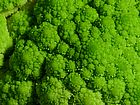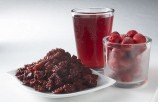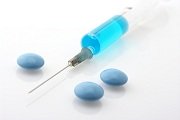How To Raise Glutathione Levels

After my husband and I learned about glutathione (GSH) the next logical question was how to raise glutathione levels, and most importantly how to do it safely, naturally and with long-term effect. What we learned has benefited our health and our family greatly. Wisdom comes from answers, and answers are only obtained by asking questions, so ask lots of questions. The better the question, the greater the wisdom gained from the answer. When you have found the answer to how to raise Glutathione, you will have gained some invaluable wisdom into how to live a healthier life.
People who are in good health can benefit from raising glutathione, too. These days we are exposed as never before to environmental toxins and newly emerging drug-resistant bacteria. When people lose healthcare benefits and disease prevention becomes urgent, it is essential to learn how to raise glutathione effectively. The more we learn how to raise glutathione and implement what we learn, the fewer visits we make to the doctor and the more control we take over our health.
It took time and a lot of questions before my husband and I both understood that glutathione was the hope and the answer that doctors could not give us. Once we realized this, it was time to find out how to raise glutathione levels. What we learned on our journey is presented on this page. So, let's get started.
Before you proceed with exploring all the options below, read our page Raising Glutathione: what does it mean exactly?
Substances promoting glutathione production can be divided into three categories: natural products, cofactors of glutathione production and pharmaceutical drugs.
HOW TO RAISE GLUTATHIONE WITH NATURAL PRODUCTS
Oral Glutathione - if our bodies depend on glutathione for so many important protective functions, what can be easier than eating it? But before you run to a health food store you should know that most of the research done with it shows that oral Glutathione breaks down and oxidizes in the digestive system and only some of it reaches the cells. One study showed an increase in plasma GSH after administering dietary glutathione to rats with chemically inhibited glutathione synthesis; however, no increase in liver was observed where it is most needed since liver is the largest and most important detoxifying organ.

Before 2013 all studies with oral glutathione showed that the bioavailability (usefulness) of this supplement is very low, and in this form it cannot seriously affect immune health.
Read the abstracts of the older studies confirming ineffectiveness of raising Glutathione with oral or dietary GSH.
In a more recent 2011 study “Effects of oral glutathione supplementation on systemic oxidative stress biomarkers in human volunteers” published in the Journal of Alternative and Complementary Medicine researchers from Bastyr University Research Institute, Kenmore, WA, examined the effect of oral glutathione supplementation on biomarkers of systemic oxidative stress in 40 healthy adult volunteers. This was a randomized, double-blind, placebo-controlled clinical trial. There were no differences in oxidative stress biomarkers between treatment groups at baseline. One group of volunteers took 500 mg of oral glutathione supplement twice daily for 4 weeks, another group received placebo. At the end of the study total reduced glutathione (GSH), oxidized glutathione (GSSG), and the ratio of GSH to GSSG (indicator of oxidative stress) remained unchanged in both groups compared to the results obtained before supplementation. It was concluded that no significant changes were observed in biomarkers of oxidative stress, including glutathione status, in this clinical trial of oral glutathione supplementation in healthy adults.
UPDATE on oral GSH: The latest study published in 2013 with 54 healthy adults registered for the first time a 30-35% increase in GSH levels after 6 months of supplementing with oral glutathione at 1,000mg/day - the same dose as what was used in the 2011 study above, only for a longer period of time. The GSH levels returned back to baseline one month after the end of the trial ("Enhanced Glutathione Levels in Blood and Buccal Cells by Oral Glutathione Supplementation".Richie JP, Nichenametla S et al. The FASEB Journal. April 2013;27:862.32). These new results with oral GSH do sound interesting, however one of the concerns is that people with health issues that require immediate attention cannot wait six months for their glutathione levels to go up. And will the oral GSH brands other than the one used in this isolated study (Setria) produce the same results?
More human trials with oral glutathione are needed to duplicate these results and completely resolve the controversy surrounding this form of glutathione supplementation.
For more details on oral GSH, additional comments on this latest 2013 study and further updates on the oral glutathione research visit our page
Oral Glutathione.
Additional information on the safety of oral glutathione -
Glutathione Side Effects.
Liposomal (lipoceutical) glutathione – this form of oral glutathione differs from GSH in pill form. In this case GSH molecule is encapsulated in water inside a fat ball that is so small that it cannot be seen with a naked eye. The digestive system is “tricked” into interpreting it as a fat cell and does not digest and break it down as it would do with GSH pills, thus allowing it to enter the bloodstream. There are studies on cell culture (in a tube) and rodents proving that liposomal glutathione is in fact effective in maintaining GSH levels under the conditions of exposure to dangerous toxins or induced disease. Cell culture studies cannot be applied to human physiology, and rodents also absorb oral GSH pills quite well. One study on humans - with autistic children - showed that the oral liposomal group (compared to the transdermal group) exhibited increases in plasma reduced glutathione, but not whole-blood glutathione levels following supplementation; both groups also showed increases in plasma sulfate and cysteine which was attributed to the actual breakdown of glutathione (A clinical trial of glutathione supplementation in autism spectrum disorders. Kern JK et al. Med Sci Monit. 2011 Dec;17(12):CR677-82). Another problem with this method of raising GSH is determining which brand will work since they all lack specific human trials and base advertising on general tube/rodent research only. Secondly, liposomes degrade quickly, within a few months of the date of manufacture. A product that has not been made a couple of weeks prior to the purchase may not be effective. And lastly, liposomes are usually made out of soy lecithin raising the question of safety since almost all soy is GMO nowadays, and also there may be an allergy concern for some people. One of the brands I am aware of that uses sunflower lecithin instead of soy and claims to be non-GMO is
Optimal Liposomal Glutathione by Seeking Health /affiliate link/. If you're planning to give liposomal GSH a try I would recommend this brand.

Foods - Cyanohydroxybutene and sulforaphane, phytochemicals found in broccoli, cauliflower, Brussels sprouts and cabbage, and chrolophyll in parsley contribute to raising glutathione levels. Some spices - for instance, turmeric, cinnamon and cardamom - have compounds that can assist in restoring healthy levels of GSH and boost the activity of GSH enzymes. Beets have been shown to positively affect the activity of GSH enzymes as well. However, research on these phytochemical compounds' role in glutathione production is limited to animal studies and cell culture studies. Glutathione molecule is present in fruit, vegetables and meats. But most of the dietary glutathione, just like oral glutathione supplements, gets broken down in the digestive tract and cannot effectively raise cellular glutathione levels. Although including foods with high glutathione content into your diet is of course beneficial. For more information about foods with glutathione visit our page
Glutathione Foods. For more information on broccoli phytochemicals visit our page
Health Benefits of Broccoli.
Methionine – an essential amino acid present in many foods and required for production of cysteine which is one of the three building blocks for glutathione. Methionine is available from health food stores, too. Of great concern is the fact that methionine is also a precursor of homocysteine identified as a high risk factor in atherosclerosis (hardening of arteries).
Lipoic acid (alpha lipoic acid) - a disulfide compound with several functions: it acts as an antioxidant, it neutralizes several toxins including heavy metals lead and cadmium, it acts as a co-enzyme for recycling other antioxidants including glutathione and also vitamins C and E. Lipoic acid is produced in the body but also available as a supplement. It plays an important role in converting glutathione back and forth from its oxidized form to its reduced or non-oxidized form (GSH). This ability of lipoic acid to enhance glutathione function leads to improved levels of GSH in cases of Glutathione deficiencies – most known diseases show glutathione deficiencies especially in their chronic state. Recommended dosages of supplemental lipoic acid are 100 to 200 mg/day.
Glutamine - free amino acid found in the body in abundance. It is common in blood, muscles and the brain. Glutamine is very closely related to glutamic acid (glutamate) – second most important Glutathione precursor after cysteine. Glutamine and glutamate have the ability to metabolize into one another which means glutamine supplies the body with glutamate – that is an important function. The studies have shown that when taken orally or intravenously glutamine raises glutathione concentrations. Glutamine is crucial to the metabolism and maintenance of muscles. It serves as a primary nutrient for the cells of the GI tract lining; supports liver metabolism and function; can boost the immune system – all due to its ability to promote Glutathione production. One study led by Dr. Rouse of University of Arkansas showed that glutamine as a supplement was able to lower glutathione levels in tumors making them more susceptible to chemotherapy while raising glutathione in healthy cells making them more resistant to such harsh cancer treatments. Glutamine is abundant in plants and meats but gets easily destroyed by cooking. Good sources are fresh parsley, spinach and sushi with uncooked fish (make sure the restaurant is reputable and serves quality fish). Glutamine supplements vary in dosages from 500 mg to 5,000 mg. They come in pill or powder form, and are often labeled "L-glutamine". Supplemental glutamine can lead to gastrointestinal side effects. Elderly and patients with kidney and liver diseases should be very cautious when taking this supplement. Supplemental glutamine can also become excitotoxic if converted to MSG in the body. The use of supplemental glutamine, especially long-term, should be monitored by a doctor.

Melatonin – a hormone known to regulate sleep and waking cycles, produced by the pineal gland in the brain. Melatonin is released into the blood at night time and its production is affected greatly by light. Melatonin is also a powerful antioxidant and plays a role in stimulating other antioxidants as well. Melatonin has been shown to effectively raise GSH levels in many tissues including those of the brain, liver, muscle and blood serum. The only known viable natural source of melatonin is sour (tart) cherries, especially the Montmorency variety, which contain substantial amounts of melatonin, enough to produce a positive effect in the body and without any side effects unlike the synthetic form sold as pills or tablets.
Milk Thistle - a plant used by herbalists for many centuries to treat various liver disorders as it seems to stimulate the growth and regeneration of injured liver cells. The active component of milk thistle called silymarin prevents lipid peroxidation of GSH and maintains its levels. Recommended dosages vary quite a bit from 50 to 500 milligrams three times a day. Toxic reactions can develop with overdose: cramps, gas and diarrhea. Milk thistle should not be used without a professional medical advice.
Cysteine - an amino acid that is required for the production of Glutathione directly in the cells - that's where Glutathione is most needed and produced by the body itself. Cysteine is usually the limiting factor in the production of Glutathione because of its shortages. Cysteine can be found at health food stores as a supplement but consumed this way it can promote hypercysteinemia (homocysteinemia) and potential toxicity. It is also present in many fruits, vegetables, meats and eggs bonded with other amino acids to form proteins, however, it gets destroyed by cooking. Most cysteine from raw produce does not survive the trip from the stomach to cells either. The cysteine that does survive is quickly eaten up by the bacteria in our intestinal tract - all living organisms use cysteine, so it is useful in that it helps our flora to stay healthy.
MSM (methylsulfonylmethane) - this naturally occurring compound is a donor of organic sulfur, a non-metal mineral present in all our cells and essential to life. Most of the sulfur in human bodies is in the form of sulfur-containing amino acids cysteine and methionine; however, MSM acts as a source of additional sulfur for numerous processes in the body and plays an important role in sulfur metabolism. Sulfur is needed for manufacturing of alpha-lipoic acid and vitamin B1, both are important glutathione cofactors. MSM has been shown to promote the synthesis of glutathione and to upregulate the activity of glutathione enzymes in the presence of elevated oxidative stress in animal studies. One human trial showed considerably higher plasma glutathione levels in MSM supplemented group after strenuous exercise.
Raw milk (raw dairy) - this option of how to raise Glutathione belongs in the food category. But the uniqueness of this food deserves special attention. Raw milk whey contains powerful Glutathione precursors - lactoferrin, beta-lactalbumin and serum albumin. They are very easily denatured by heat and mechanical stress during pasteurization and homogenization of milk. After digestion the products of these compounds' breakdown pass readily into the bloodstream, serving as cysteine and cysteine delivery systems, thus enabling cysteine to get into the cells for Glutathione production. This is how our ancestors used to get their cysteine from diet before pasteurization became mandatory. How to raise Glutathione with raw milk? There are three problems: first, you have to have free access to a raw dairy farm; second, you have to be sure the farm delivers safe raw milk free of pathogens; third, to raise Glutathione levels noticeably you will have to drink at least 2 gallons of raw milk a day which is impossible to do. But adding raw milk to the diet is still a good idea: you do get some bioavailable cysteine this way, just not in sufficient quantities. Raw milk is also a very good food source of MSM (methylsulfonylmethane).
Find a raw milk dairy in your area.
Undenatured whey proteins - not all whey proteins are made in the same way. Whey proteins that are manufactured from raw milk using the process of cold filtration and segmentation (removal from other agents in milk) leave the final product undenatured or unaltered. As a result, a cysteine molecule is actually double bonded with another cysteine molecule and is now called cystine (note the difference in spelling). Cystine in this manner is resistant to stomach acid breakdown and freely flows across the intestinal wall into the blood. Cystine enters the cells and separates into two cysteine molecules - exactly where we want it to be. Another molecule present exclusively in raw milk and in undenatured whey protein is glutamylcysteine which is glutamate and cysteine already joined together - the first step in the formation of a glutathione molecule. High quality undenatured whey proteins preserve the original bioactivity of cysteine and glutamylcysteine guaranteeing the highest level of glutathione promoting activity. This has been our preferred method of providing glutathione precursors and improving glutathione levels. Check out our Undenatured Whey Protein Comparison.
Colostrum – is the liquid secreted by the milk glands of all mammals just before giving birth and during the first hours (up to one day) after giving birth before milk comes in. Out of the group of bonded cysteine and glutamylcysteine rich proteins found in whey (alpha-lactalbumin, beta-lactoglobulin, serum albumin, lactoferrin and immunoglobulins) colostrum contains only lactoferrin and immunoglobulins. There are neither animal nor human trials proving specifically that colostrum raises glutathione levels at a certain established dose. Polypeptides derived from colostrum (but not colostrum itself) have been shown to improve glutathione metabolism in isolated cells (test tube studies) via modulation of intracellular levels of reactive oxygen species (ROS), slow down aging in animals, and show some stabilizing effect in Alzheimer’s patients (Colostrinin: an oxidative stress modulator for prevention and treatment of age-related disorders. Boldogh I, Kruzel ML. J Alzheimers Dis. 2008 Apr;13(3):303-21.). While colostrum does not optimize glutathione levels significantly it can be of benefit due to its many other health promoting substances that stimulate the activation of the immune system and prevent its overreaction, prevent attachment of microorganisms to the lining of the GI tract, participate in the regeneration of various types of tissues, assist in the absorption of vitamins and minerals, etc. These substances are divided into several categories: immuno-regulating substances, gut protecting substances, the growth factors and the metabolic factors. High quality low-heat processed colostrum that preserves fragile proteins may be a useful accompanying supplement in a GSH raising protocol.
HOW TO RAISE GLUTATHIONE WITH COFACTORS

Vitamins - in one trial, blood GSH levels rose nearly 50% in healthy people taking 500 mg of vitamin C per day for only two weeks. Vitamin C raises Glutathione by helping the body manufacture it.
Vitamin E acts in a similar way as vitamin C - it recycles Glutathione and depends on it for proper function and recycling as well.
Vitamins B6, B12, B1 and B2 are also required in the synthesis of Glutathione. B1 and B2 maintain Glutathione and its related enzymes in their active forms. B2 helps combine amino acids into proteins, and Glutathione is one of them. B6 is crucial for the metabolism and proper function of many amino acids, for example, for converting homocysteine into cysteine. B12 acts as a coenzyme in the production and regulation of red blood cells.
Folate or folic acid (known as B9) - its role as Glutathione booster lies in folate’s ability to divert cysteine preferentially towards Glutathione production rather than homocysteine production, thus helping supply the cells with more cysteine for building intracellular Glutathione. Maximum recommended dosage of folate is 400 mcg/day. Best dietary sources are spinach, turnip greens, lettuce, dried beans and peas, sunflower seeds, peanuts, avocado, asparagus, fortified pastas and cereals. When cooking veggies they should be steamed instead of boiled – less folate leaches into the water this way.
Selenium - the trace element that functions as an antioxidant. It also participates in protein synthesis and other metabolic processes and acts together with other antioxidants, especially vitamin E. Selenium elevates the levels of glutathione peroxidase; the cysteine molecule appearing in the process of digestion of plants grown in selenium-rich soil contributes to GSH production. Recommended Daily Intake (RDI) for adults is 55 mcg. Best dietary sources are Brazil nuts, sunflower seeds, oatmeal, tuna, turkey, chicken breast, beef, eggs and brown rice.
Magnesium - magnesium is necessary for proper functioning of enzyme gamma glutamyl transpeptidase which is important in the synthesis of Glutathione. RDI is 400 mg, but optimum daily intake is considered at 490- 700 mg. Best dietary sources are halibut, spinach, squash, pumpkin seeds, sunflower seeds, toasted sesame seeds, beans, walnuts, almonds, peanuts and Brazil nuts.
Zinc - zinc deficiency leads to low concentrations of reduced (non-oxidized) Glutathione, especially in red blood cells. This is detrimental to Glutathione metabolism. However, high levels of zinc may reduce Glutathione because zinc has a certain toxicity. RDI for adults is 8-11 mg. Best dietary sources are oysters, beef shanks, chicken legs, pork shoulder and tenderloin, and Alaskan King crab. Zinc from beans, legumes and grains has very low bioavailability compared to meat sources.
Vanadium - this element depends on Glutathione to stay in non-oxidized state and to increase vanadium’s bioavailability. It may recycle Glutathione under certain conditions. Vanadium is not considered a crucial cofactor and at high levels it may even deplete glutathione due to its toxicity. Vanadium’s role in health has not been studied very well, so there is no RDA established. Average diet provides 6-18 mcg a day. Safe upper limit is 1.8 mg (1,800 mcg). Dietary sources are: mushrooms, shellfish, dill, parsley and black pepper.
Adequate amounts of vitamins C, E, B1, B2, B6, B12, folate, selenium, magnesium and zinc, either from diet or with additional supplementation, are necessary for raising Glutathione levels.
HOW TO RAISE GLUTATHIONE WITH DRUGS

Intravenous (IV) glutathione – this method of glutathione administration belongs in the drugs category because it is a pharmaceutical formulation and can be administered only at a hospital, clinic or a doctor’s office. This method is reserved exclusively for the cases of severe glutathione deficiency, such as during cancer treatments, HIV/AIDS treatments, in deficiencies arising from a person’s inability to efficiently produce glutathione on his/her own due to genetic mutations, or other causes. Glutathione IV has an extremely short half-life in bloodstream – only an average of 14 minutes. Degradation of IV glutathione administered at a dose of 2,000 mg (2 g) does lead to the accumulation of cysteine that becomes available to cells. At the same time urinary excretion of glutathione and cysteine increase 300- and 10-fold respectively 90 minutes after administration. (High-dose intravenous glutathione in man. Pharmacokinetics and effects on cyst(e)ine in plasma and urine. Aebi S, Assereto R et al. Eur J Clin Invest. 1991 Feb;21(1):103-10). Depending on the medical condition, IVs need to be administered regularly - daily or weekly.
NAC – N-acetyl-cysteine - is a potent glutathione precursor that is the most commonly used GSH boosting agent in studies on both animals and humans because it is readily available, cheap and acts fast. It has been available as a drug (Mucomist, Parvolex etc.) and also can be found on the shelves of health food stores marketed as a glutathione booster.
Some people taking NAC report rash, wheezing, nausea, vomiting, cramps and diarrhea. NAC is also widely used in hospital emergency rooms, usually intravenously, on patients suffering from severe acetaminophen toxicity due to Tylenol overdose in order to quickly spike their glutathione levels and save their lives. These measures often lead to above-mentioned side effects, sometimes resulting in death from complications if there are underlying health conditions such as asthma.
Also, raising GSH levels with NAC has only temporary effect lasting mere hours which requires taking it often to maintain glutathione throughout the day which is hard on the body. With NAC the rapidly increased glutathione levels often drop below the normal levels.
A recent randomized and placebo-controlled study (2013) linked NAC supplements with hindered muscle performance and increased recovery time for several days after athletic exercise (Thiol-based antioxidant supplementation alters human skeletal muscle signaling and attenuates its inflammatory response and recovery after intense eccentric exercise. Michailidis Y. et al. Am. J Clin Nutr. 2013 Jul;98(1):233-45. doi: 10.3945/ajcn.112.049163. Epub 2013 May 29.).
SAMe – S-adenosyl-methionine - is a form of methionine already partially converted into cysteine, it can be useful in the treatment of cirrhosis and cholestasis and is a popular mood stabilizing medication. Although available as a supplement in the US, SAMe is a drug and cannot be used as a safe and natural method of raising glutathione.
OTC & OTZ – these are synthetic cysteine delivery systems. These drugs are not readily available to doctors or the general public.
HOW TO RAISE GLUTATHIONE BY NOT DEPLETING IT
Glutathione is depleted by a very large number of substances. Some can be avoided, some cannot. Understanding what depletes Glutathione and reducing your exposure to these "offenders" makes your efforts in raising Glutathione levels more effective.
Knowing how to raise Glutathione is very important, but it is also wise to know
what depletes Glutathione.
HOW TO RAISE GLUTATHIONE: CONCLUSIONS
Some of the most important points of this research are:
- Elevated levels of glutathione promote long healthy lives that are more resistant to diseases. All clinical studies reviewed showed that raising glutathione to its optimal levels is of great benefit to the human body.
- While there are many options of how to raise Glutathione, the most natural and effective, with hardly any side effects, appear to be undenatured whey proteins, melatonin in its natural state in tart cherry concentrate, alpha lipoic acid, milk thistle and MSM.
- Quality undenatured whey proteins supply cysteine - the most essential of the three glutathione precursors; while natural melatonin (tart cherry), alpha lipoic acid, MSM and milk thistle act more as enhancers of glutathione synthesis and function.
- Glutamine can be converted into glutamate, the second most important glutathione precursor, and thus it plays a significant role in glutathione metabolism.
- High quality undenatured colostrum may be a beneficial accompanying supplement in a GSH raising protocol
- All cofactors of glutathione production (vitamins C and E, B1, B2, B6, B12, folate (B9), selenium, magnesium and zinc) are necessary in sufficient quantities. Their deficiencies are detrimental to glutathione metabolism.
- It is just as important to know how not to deplete glutathione as it is to know how to raise glutathione.
Hopefully, you now have some answers to the question of how to raise glutathione. Specifically, you should have some answers on how to raise glutathione levels with natural products, with cofactors and with drugs, and also pros and cons of each of these options. You should have also gained some wisdom concerning how to raise glutathione, and wisdom is more valuable than gold.
In addition, watch this short 9-minute video with Dr. Mark Hyman, a practicing physician and New York Times bestselling book author, explaining the importance of keeping your glutathione up and more tips on the ways to raise glutathione:
Further reading:
What is glutathione deficiency?
Cysteine - most important of three Glutathione precursors
Facts About Vitamins
What are other ways to boost your immune system in addition to raising Glutathione?
What foods help boost immune system?
Return to Top of How To Raise Glutathione
Return to Glutathione
Return to Home






